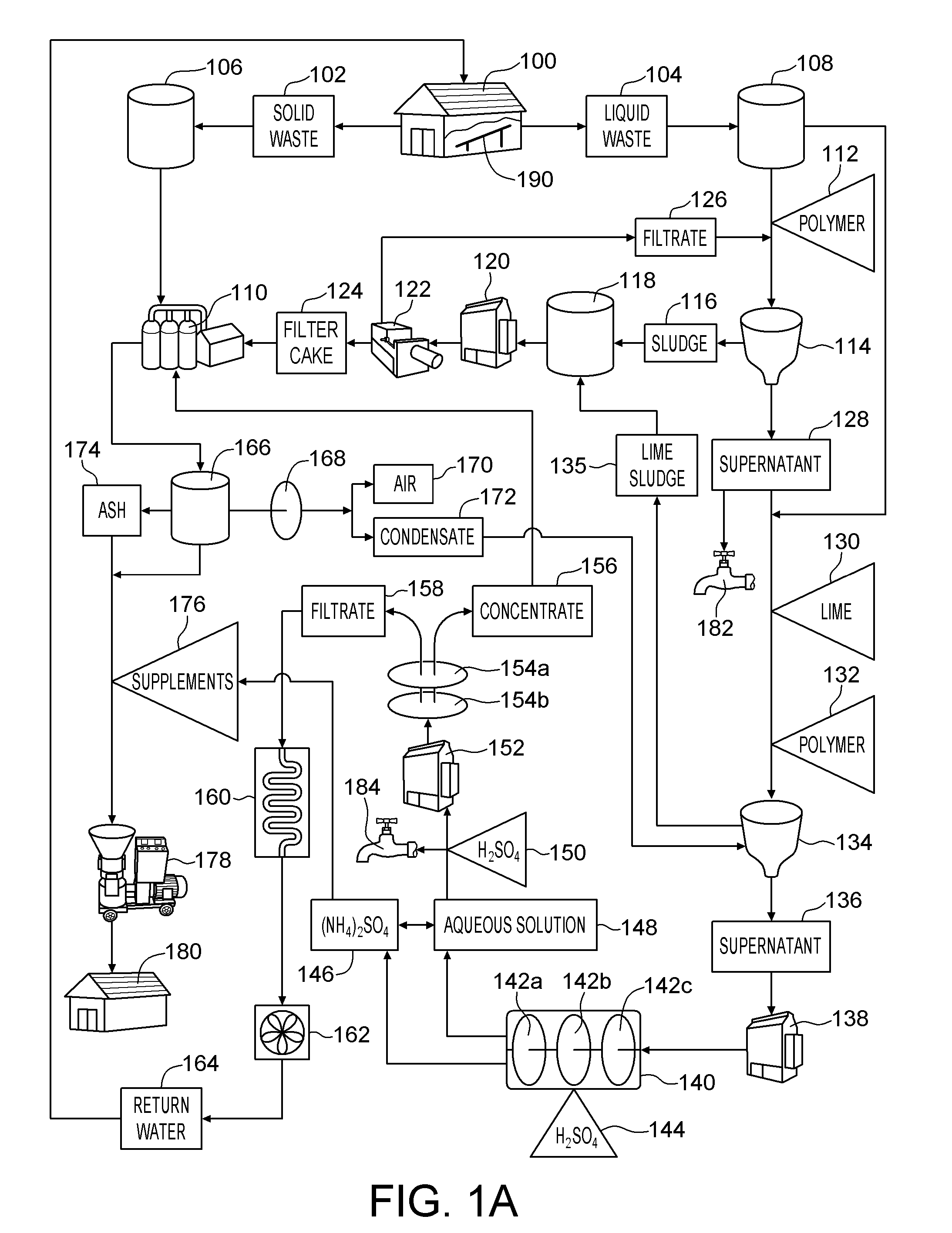System and method for producing methane, an organic based fertilizer and usable water from animal waste
a technology of organic fertilizer and animal waste, which is applied in the direction of biological water/sewage treatment, inorganic fertilizer, water contaminants, etc., can solve the problems of large amounts of animal waste produced at such locations, the problem of hygienic and inoffensive disposal of animal waste, and the rejection of applications for permits to construct large hog farms
- Summary
- Abstract
- Description
- Claims
- Application Information
AI Technical Summary
Benefits of technology
Problems solved by technology
Method used
Image
Examples
first embodiment
[0030]Referring to the drawings and first to FIG. 1 this is a schematic diagram showing an improved system and method for producing an organic based fertilizer and usable water from animal waste collected on an agricultural operation. In this example, animal waste is collected in a barn 100 but in other embodiments animal waste may be collected anywhere on the agricultural operation. Preferably the animal waste is removed from the barn 100 using a conveyor system 190 similar to the type disclosed in U.S. Pat. No. 7,232,036, issued Jun. 19, 2007, to Van Slyke et al., the full disclosure of which is incorporated herein by reference. This allows for the rapid separation of solid wastes from liquid wastes.
[0031]In the example shown in FIG. 1A, the conveyor system 190 disclosed by Van Slyke et al. is used to rapidly separate solid waste 102 from liquid waste 104 in the barn 100. The solid waste 102 is collected in a solid waste storage tank 106 and the liquid waste 104 is directed to a l...
second embodiment
[0041]Referring now to FIG. 2A, this is a schematic diagram showing an improved system and method for producing an organic based fertilizer and usable water from animal waste collected on an agricultural operation. In FIG. 2 like components have been given like reference numerals as in FIG. 1 with the expectation that the reference numerals are in the 200 series as opposed to the 100 series, i.e. the barn is given reference numeral 100 in FIG. 1 and reference numeral 200 in FIG. 2. Similarly the dryer has been given reference numeral 110 in FIG. 1 and reference numeral 210 in FIG. 2.
[0042]In the example shown in FIG. 2A, animal waste is collected by scraping or flushing the gutters of a barn 200. This results in slurry201 of solid waste and liquid waste which may contain bedding or stringy components. The slurry 201 is passed through a chopper pump 203 to promote homogeneity. The collected slurry 201 is stored and agitated in a slurry storage tank 205 to avoid the settlement of any ...
PUM
| Property | Measurement | Unit |
|---|---|---|
| population density | aaaaa | aaaaa |
| pH | aaaaa | aaaaa |
| temperature | aaaaa | aaaaa |
Abstract
Description
Claims
Application Information
 Login to View More
Login to View More - R&D
- Intellectual Property
- Life Sciences
- Materials
- Tech Scout
- Unparalleled Data Quality
- Higher Quality Content
- 60% Fewer Hallucinations
Browse by: Latest US Patents, China's latest patents, Technical Efficacy Thesaurus, Application Domain, Technology Topic, Popular Technical Reports.
© 2025 PatSnap. All rights reserved.Legal|Privacy policy|Modern Slavery Act Transparency Statement|Sitemap|About US| Contact US: help@patsnap.com



